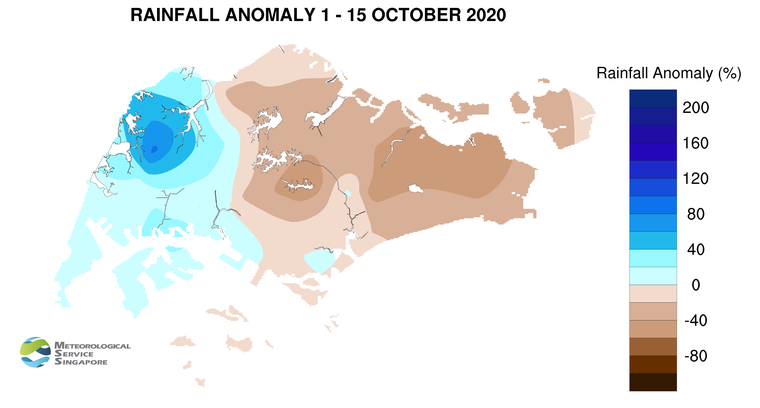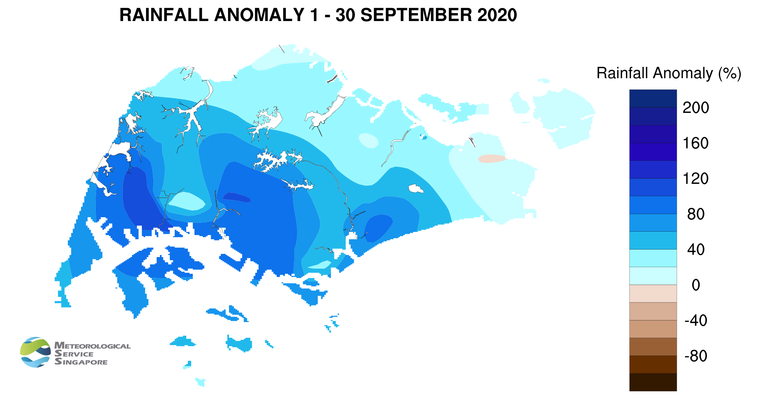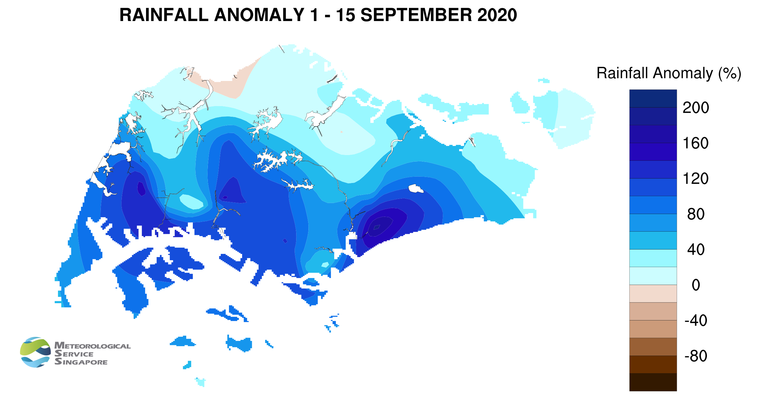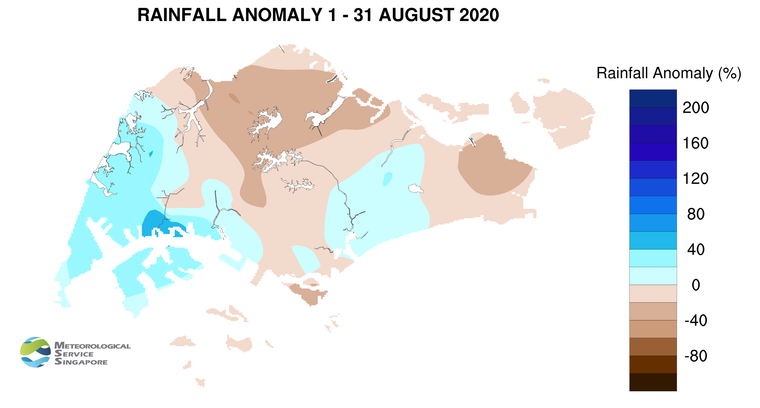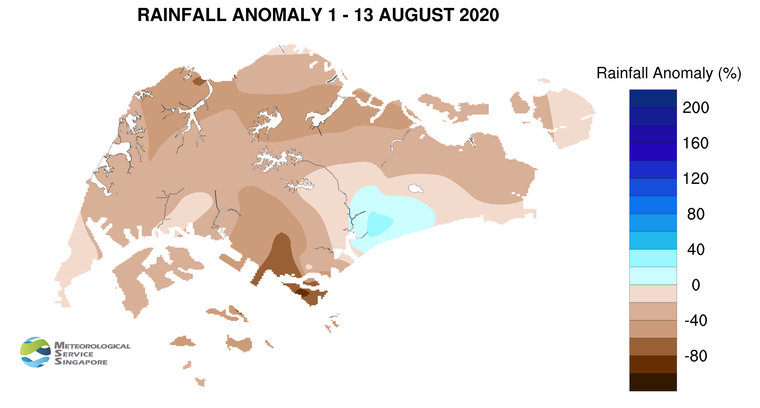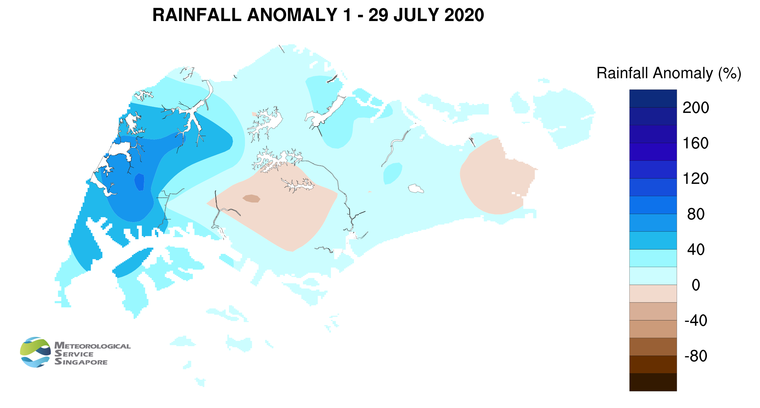Fortnightly Weather Outlook for 16 – 31 October 2020
Singapore, 16 October 2020 – In the second fortnight of October 2020, the monsoon rain band is forecast to lie over the northern Southeast Asia region. During the period, Singapore can expect dry and warm conditions, with daily highs of around 34°C on most days.
2 The prevailing Southwest Monsoon conditions with low-level winds blowing from the southeast or southwest are expected to persist in the second half of October 2020. With low-pressure systems expected to develop over the northern South China Sea, the low-level winds over Singapore and the surrounding vicinity are forecast to strengthen and blow from the west on some days.
3 During this fortnight, it is forecast to be dry and warm. However, localised short-duration moderate to heavy thundery showers can still be expected on some days over parts of the island between the late morning and afternoon. In addition, Sumatra squalls are forecast to bring thundery showers and gusty winds on some days between the predawn hours and morning. Overall, the rainfall for October 2020 is forecast to be below normal over most parts of Singapore.
4 Warm conditions are expected on most days for the rest of the month, and the daily temperature is forecast to range between 25°C and 34°C. The daily maximum temperature could reach close to 35°C on a few days, particularly when there are few clouds in the sky.
5 For updates of the daily weather and haze situation, please visit the MSS website (https://www.weather.gov.sg), NEA website (www.nea.gov.sg), or download the myENV app, MSS’ Weather@SG app, and the haze microsite (www.haze.gov.sg).
REVIEW (1 – 15 October 2020)
6 In the first half of October 2020, Southwest Monsoon conditions prevailed over Singapore and the surrounding region. During the period, the low-level winds blew from the southeast or southwest. There were some days when the winds over Singapore and the surrounding region strengthened to blow from the west due to the presence of tropical storms over the South China Sea and the northwestern Pacific Ocean.
7 The influence of these tropical storms resulted in large-scale wind convergence over Singapore and the surrounding vicinity. Widespread moderate to heavy thundery showers fell over the island on several days, mostly between the night and predawn hours. The showers were due to the passage of Sumatra squalls from the Strait of Malacca over Singapore. The showers were heaviest on 2 October 2020, and the daily total rainfall recorded that day was 108.2mm at Tuas. This was the highest rainfall recorded in a day for the first fortnight of October 2020.
8 During the fortnight, the occurrence of these Sumatra squalls brought cloudy and cool conditions on most days. The daily maximum temperature across the island was below 34°C on all days except on 5 October 2020. The maximum temperature recorded that day was 34.8°C at Pulau Ubin. The lowest daily minimum temperature recorded in the fortnight was 22.6°C at Clementi on 3 October 2020.
9 In the first half of October 2020, rainfall was above average over the western part of the island, while for the rest of the island, rainfall was below average. Choa Chu Kang recorded the highest rainfall anomaly of 87% above average, while MacRitchie in the central part of Singapore recorded the highest rainfall anomaly of 57% below average.
CLIMATE STATION STATISTICS
Long-term Statistics for October
(Climatological reference period: 1981 – 2010)
| Average daily maximum temperature | 31.7°C |
| Average daily minimum temperature | 24.7 °C |
| Average monthly temperature | 27.6 °C |
| Average rainfall | 154.6 mm |
| Average number of rain days | 15 |
Historical Extremes for October
(Rainfall since 1869 and temperature since 1929)
| Highest monthly mean daily maximum temperature: | 33.0 °C (2002) |
| Lowest monthly mean daily minimum temperature: | 22.8 °C (1964) |
| Highest monthly rainfall ever recorded: | 497.1 mm (1942) |
| Lowest monthly rainfall ever recorded: | 10.8 mm (2002) |
